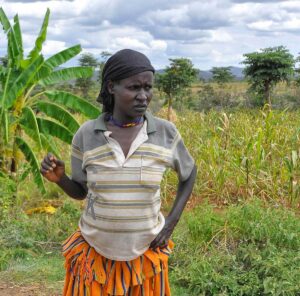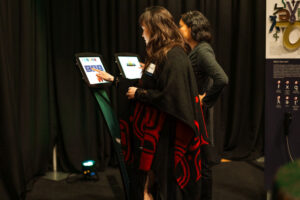Project Contributor: Zerihun Woldu

Konso woman, Ethiopia. Photo: Rod Waddington/Wikimedia
The southern Rift Valley in Southwestern Ethiopia is known as one of the hotspots of biocultural diversity and of indigenous knowledge associated with the use and conservation of biodiversity through home gardens, agroforestry practices, and sacred forests. The project “Ethnobotany of Indigenous People of the Southern Rift Valley and Southwestern Ethiopia” was undertaken in collaboration with the Hamar, Konso, Dassanetch, Mursi, Me’en, and Dizi Indigenous Peoples of Southern Ethiopia, with support from The Christensen Fund.
The first phase of the project focused on the ethnobotanical knowledge of the Konso and Hamar peoples. Project results show that the Konso tradition of growing multipurpose indigenous trees in their crop fields and home gardens acts to maintain these trees, even after the species become rare or absent in natural stands. Such traditions promote biodiversity conservation through uses that are essential to the Konso’s livelihoods. The polycultural farming system, which minimizes the risk of crop failure, is also a means of diversifying crop niches. The subtle and active processes involved in the cultivation and gradual domestication of selected useful wild plants add yet another dimension to the local agrobiodiversity. Women play an active role in maintaining agrobiodiversity, a role not commonly recognized in research and development initiatives. There is also a tradition of recognizing and ensuring the continued existence of sacred forests in the Konso area, showing that traditional leaders and traditional institutions such as religious beliefs play a vital role in conserving these natural forests. In the highly degraded Konso landscape, remnant patches of natural forests are still found because of these traditional practices. In these sacred forests, there is less deforestation, since traditional spiritual values have influenced people’s behavior and have played a role in protecting them and ensuring that some of the culturally valued trees and other medicinal plants are found on a sustained basis. Although they occupy a relatively small area, the sacred forests in Konso have greater woody species richness and taxonomic diversity than the communal grazing lands, bushlands, and scrublands protected by the community. In the Hamar area, there is also a tradition of protecting large riverine trees through a system of taboos.
An important feature of the project is that it was conducted with the active participation of the Indigenous Peoples of the concerned communities as equal partners of the project team, and all findings, publications, and patents will belong to all team partners. The project is working to introduce mechanisms of horizontal exchange of knowledge, experience, and resources of useful values, knowledge, and skills with the neighboring communities.
Although the project was initiated by academic staff of the Department of Biology at Addis Ababa University, the project is determining methods for best practices of working together with Indigenous Peoples based on mutual trust and equal participation for the fair and equitable sharing of benefits accrued, in line with the principles espoused in the Convention on Biological Diversity.




